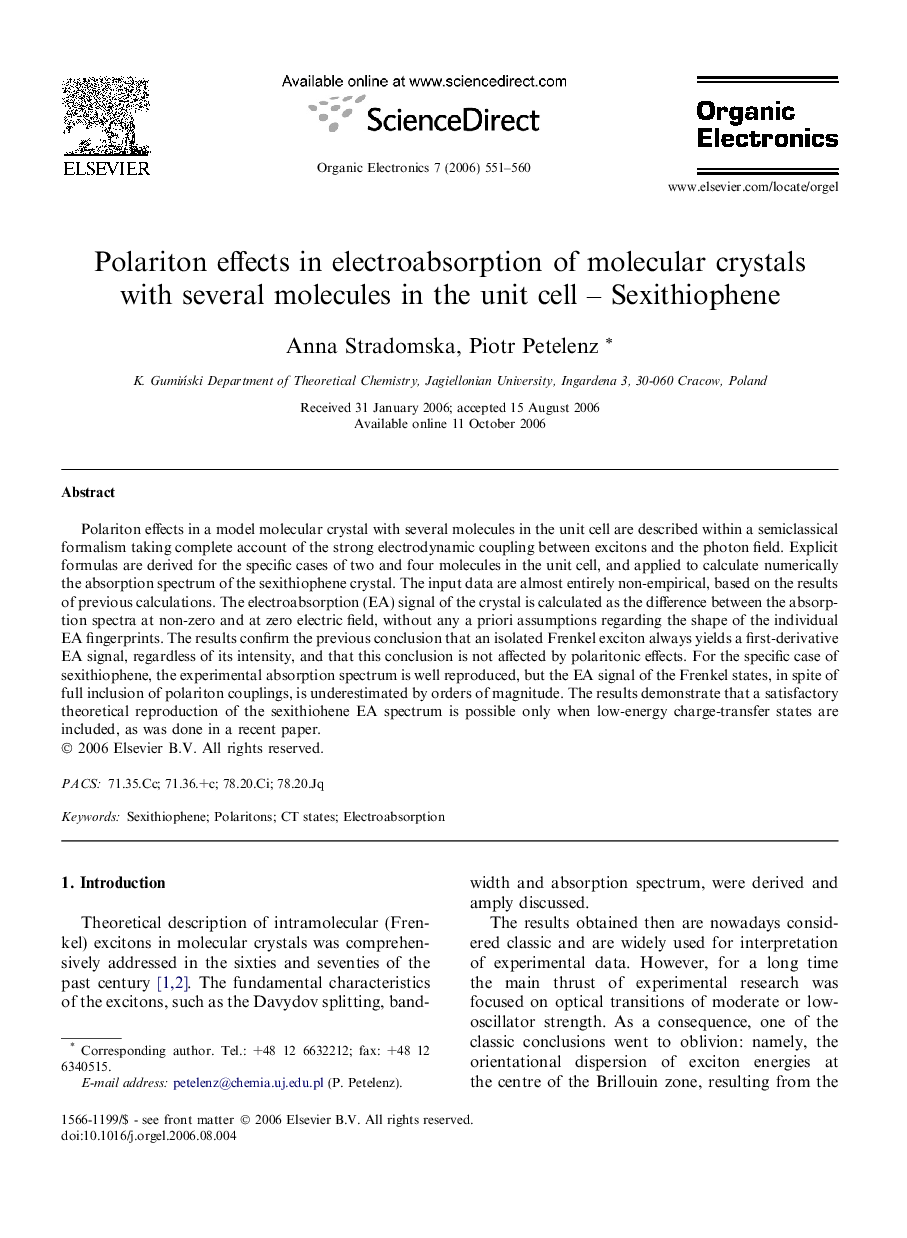| Article ID | Journal | Published Year | Pages | File Type |
|---|---|---|---|---|
| 1265735 | Organic Electronics | 2006 | 10 Pages |
Abstract
Polariton effects in a model molecular crystal with several molecules in the unit cell are described within a semiclassical formalism taking complete account of the strong electrodynamic coupling between excitons and the photon field. Explicit formulas are derived for the specific cases of two and four molecules in the unit cell, and applied to calculate numerically the absorption spectrum of the sexithiophene crystal. The input data are almost entirely non-empirical, based on the results of previous calculations. The electroabsorption (EA) signal of the crystal is calculated as the difference between the absorption spectra at non-zero and at zero electric field, without any a priori assumptions regarding the shape of the individual EA fingerprints. The results confirm the previous conclusion that an isolated Frenkel exciton always yields a first-derivative EA signal, regardless of its intensity, and that this conclusion is not affected by polaritonic effects. For the specific case of sexithiophene, the experimental absorption spectrum is well reproduced, but the EA signal of the Frenkel states, in spite of full inclusion of polariton couplings, is underestimated by orders of magnitude. The results demonstrate that a satisfactory theoretical reproduction of the sexithiohene EA spectrum is possible only when low-energy charge-transfer states are included, as was done in a recent paper.
Related Topics
Physical Sciences and Engineering
Chemistry
Chemistry (General)
Authors
Anna Stradomska, Piotr Petelenz,
